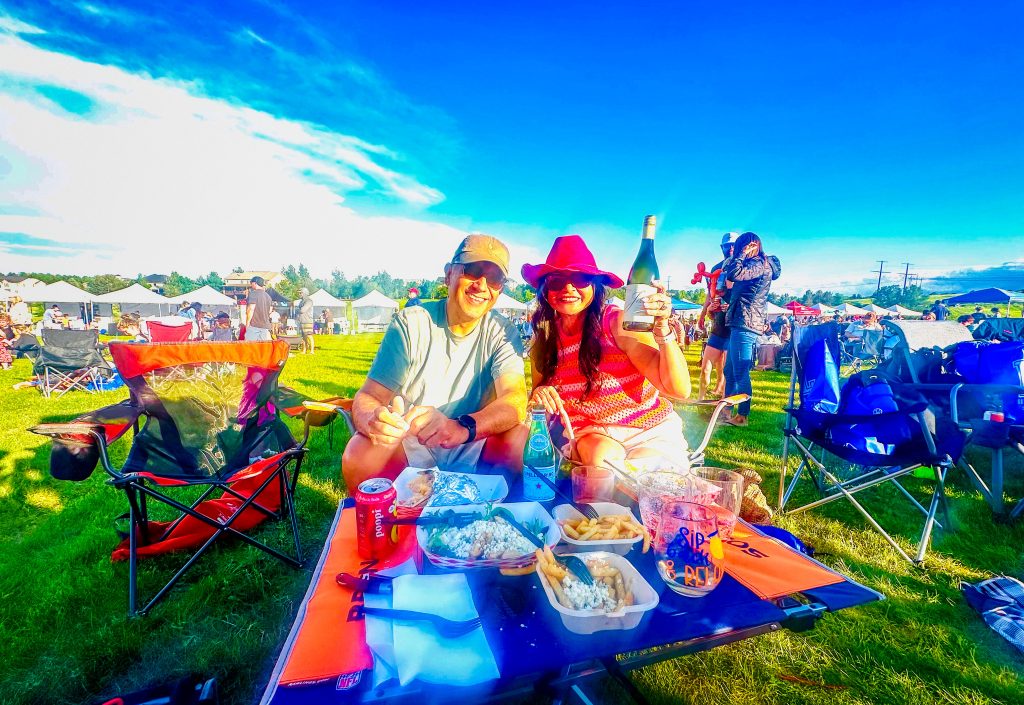Warm weather food safety

Xavier and Rina Castanon enjoying a picnic at the Food Truck Frenzy June 8.
Picnic and barbecue season means lots of outdoor cooking and eating with family and friends. Food seems to taste better outside; however, warm weather events also present opportunities for food-borne bacteria to multiply rapidly, which can lead to food-borne illnesses. To protect yourself, your family and friends, it is critical to follow safe food handling, packing, preparation and serving guidelines to enjoy the food without the ick.
When packing for a picnic, the FDA recommends keeping food cold in a cooler with ice or frozen gel packs at 40 °F or below to prevent bacterial growth. Meat, poultry and seafood may be packed while still frozen so that they stay cooler longer. Be smart about how the coolers are packed; keep beverages in a separate cooler from food since the beverage cooler will be opened often, reducing the temperature. Do not cross-contaminate by mixing raw meat, poultry or seafood with other foods.
Rinse fresh fruits and vegetables under running water before packing them in the cooler, including those with skins and rinds that are not eaten. Pack water, soap and paper towels or moist disposable towelettes for cleaning hands and surfaces at the picnic site. While obvious, cleanliness is a major factor in preventing food-borne illness. Use separate cutting boards for fresh produce and raw meat, poultry or fish.
Never let picnic or barbecue food remain in the danger zone between 40 °F and 140 °F for more than two hours, or one hour if outdoor temperatures are above 90 °F. This is when bacteria in food can multiply rapidly, and lead to food-borne illness. Keep cold foods cold by placing serving dishes directly on ice or in a shallow container set in a deep pan filled with ice. Drain off water as ice melts and replace the ice frequently.
Follow safe grilling tips to ensure cooked food reaches the table safely. Always marinate foods in the refrigerator, not the kitchen counter or outdoors. Reserve a portion of the marinade if planning to use it as a sauce after cooking. If using a bristle brush to clean the grill, make sure no detached bristles have made their way into grilled food.
Always use a meat thermometer to ensure the food is cooked through. Check a safe food temperature chart online for the minimum internal temperature to cook meat, poultry, and fish.
Keep grilled food hot but prevent overcooking by moving it to the side of the grill rack, just away from the coals, or store hot food in an insulated container until ready to serve. Always use clean platters and utensils to serve cooked food from the grill; reusing platters and utensils that previously held raw food allows bacteria to spread.
For more information, visit foodsafety.gov.
Article and photo by Lisa Nicklanovich